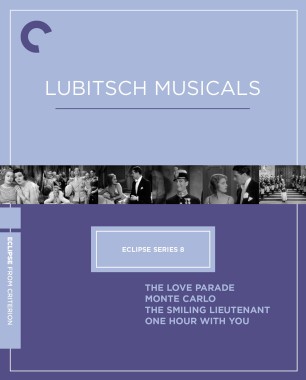To Be or Not to Be

As nervy as it is hilarious, this screwball masterpiece from Ernst Lubitsch stars Jack Benny and, in her final screen appearance, Carole Lombard as husband-and-wife thespians in Nazi-occupied Warsaw who become caught up in a dangerous spy plot. To Be or Not to Be is a Hollywood film of the boldest black humor, which went into production right before the U.S. entered World War II. Lubitsch manages to brilliantly balance political satire, romance, slapstick, and wartime suspense in a comic high-wire act that has never been equaled.
BLU-RAY SPECIAL EDITION FEATURES
- Restored 2K digital transfer, with uncompressed monaural soundtrack
- Audio commentary from 2013 featuring film historian David Kalat
- Pinkus’s Shoe Palace, a 1916 German silent short directed by and starring Ernst Lubitsch, with a piano score by Donald Sosin
- Lubitsch le patron, a 2010 French documentary on the director’s career
- Two episodes of The Screen Guild Theater, a radio anthology series: Variety (1940), starring Jack Benny, Claudette Colbert, and Lubitsch, and To Be or Not to Be (1942), an adaptation of the film, starring William Powell, Diana Lewis, and Sig Ruman
- English subtitles for the deaf and hard of hearing
- PLUS: An essay by critic Geoffrey O’Brien and a 1942 New York Times op-ed by Lubitsch
Cover by Caitlin Kuhwald
BLU-RAY SPECIAL EDITION FEATURES
- Restored 2K digital transfer, with uncompressed monaural soundtrack
- Audio commentary from 2013 featuring film historian David Kalat
- Pinkus’s Shoe Palace, a 1916 German silent short directed by and starring Ernst Lubitsch, with a piano score by Donald Sosin
- Lubitsch le patron, a 2010 French documentary on the director’s career
- Two episodes of The Screen Guild Theater, a radio anthology series: Variety (1940), starring Jack Benny, Claudette Colbert, and Lubitsch, and To Be or Not to Be (1942), an adaptation of the film, starring William Powell, Diana Lewis, and Sig Ruman
- English subtitles for the deaf and hard of hearing
- PLUS: An essay by critic Geoffrey O’Brien and a 1942 New York Times op-ed by Lubitsch
Cover by Caitlin Kuhwald

Cast
- Carole Lombard
- Maria Tura
- Jack Benny
- Joseph Tura
- Robert Stack
- Lieutenant Sobinski
- Felix Bressart
- Greenberg
- Lionel Atwill
- Rawitch
- Stanley Ridges
- Professor Siletsky
- Sig Ruman
- Colonel Ehrhardt
- Tom Dugan
- Bronski
Credits
- Director
- Ernst Lubitsch
- Produced by
- Ernst Lubitsch
- Original story
- Melchior Lengyel
- Screenplay
- Edwin Justus Mayer
- Screenplay
- Ernst Lubitsch (uncredited)
- Music
- Werner R. Heymann
- Cinematographer
- Rudolph Maté
- Editor
- Dorothy Spencer
- Production designer
- Vincent Korda
















